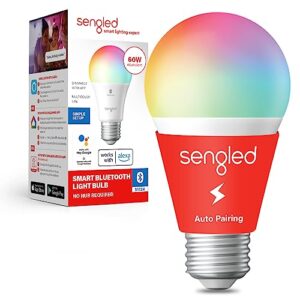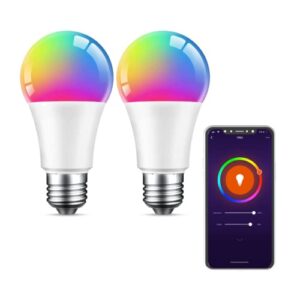Do Smart Lights Use More Electricity?
Key Takeaways
- Smart lights, particularly those using LED technology, can be more energy-efficient than traditional lights.
- LED lights consume significantly less electricity compared to traditional lights, with a reduction of approximately 75 percent in energy consumption.
- Smart lights offer additional benefits such as remote control, motion sensors, and the ability to adjust brightness levels and set schedules, further optimizing energy usage and reducing electricity consumption.
The question of whether smart lights use more electricity than traditional lights has been a subject of debate among consumers and experts. While there are varying opinions on this matter, a closer look at the available information suggests that smart lights, particularly those using LED technology, can be more energy-efficient than their traditional counterparts.
Smart Lights vs. Traditional Lights
Smart lights are designed to be energy-efficient and offer a range of benefits over traditional lights. They can be programmed to turn on and off automatically, reducing energy usage. On the other hand, traditional lights, such as incandescent and fluorescent bulbs, can be less energy-efficient and may consume more electricity.
The Energy Efficiency of LED Lights
LED lights are commonly used in smart lighting systems and are known for their energy efficiency. According to numerous research studies, LED lights consume significantly less electricity compared to traditional lights. LEDs typically use 75 percent less energy compared to incandescent lighting and are roughly 80 percent more efficient than traditional lighting options.
For example, an LED light uses approximately 75 percent less energy than an incandescent bulb while providing the same amount of light. This significant reduction in energy consumption can lead to substantial cost savings over time.
The Benefits of Smart Lights
In addition to their energy efficiency, smart lights offer several other benefits. They can be controlled remotely through a smartphone or voice-controlled assistant, allowing users to adjust brightness levels and set schedules. This level of control can further optimize energy usage and reduce electricity consumption.
Smart lights also often come with built-in sensors that can detect motion, ambient light levels, and occupancy. These sensors enable the lights to adjust their brightness or turn off when no one is in the room, further reducing unnecessary energy consumption.
Expert Opinions and Research
Experts in the field generally agree that smart lights, particularly those utilizing LED technology, are more energy-efficient than traditional lights. The U.S. Department of Energy states that LED lights used in smart lighting systems can use up to 90 percent less energy and last up to 25 times longer than traditional incandescent bulbs.
Furthermore, a report from Digital Trends highlights the energy efficiency of smart light bulbs, stating that they are typically LED bulbs and consume less energy compared to other types of bulbs.
Conclusion
Based on the information available, it can be concluded that smart lights, especially those using LED technology, are more energy-efficient than traditional lights. LED lights consume significantly less electricity and have a longer lifespan, resulting in cost savings and reduced environmental impact.
While opinions may vary, the consensus among experts and research studies supports the notion that smart lights are a more energy-efficient lighting option. By leveraging advanced technology and features such as remote control and motion sensors, smart lights can further optimize energy usage and reduce electricity consumption.
Related Websites:
- LED Lighting Info – Does Smart Lighting Use More Electricity?
- Concerning Light – Smart Lights Electricity Consumption
- LED Light Planet – Do Smart Lights Consume a Lot of Electricity?
- Lumary Smart – Smart Lights vs. Traditional Lights: A Comparison of the Pros and Cons
- Querencian – Understanding Energy Consumption: LED vs. Traditional Lights
- Digital Trends – Are Smart Light Bulbs Worth It?
- Android Central – Do Smart Lights Actually Save You Money?
- Energy.gov – Lighting Choices That Can Save You Money
FAQs:
Q: What are smart lights?
Smart lights are lighting fixtures that can be controlled remotely using a smartphone or other smart devices. They offer advanced features such as dimming, color-changing, and scheduling capabilities.
Q: How do smart lights work?
Smart lights use wireless communication technology such as Wi-Fi or Bluetooth to connect with a smartphone or a smart hub. Through dedicated apps, users can control and customize the lighting settings, including brightness, color, and scheduling.
Q: Do smart lights save energy?
Yes, smart lights can help save energy. They offer energy-efficient features such as dimming options, motion sensors, and automated scheduling, which can reduce overall electricity usage and lower energy bills.
Q: How do energy-saving features in smart lights work?
Energy-saving features in smart lights, such as dimming capabilities and energy-saving modes, allow users to adjust the brightness of the lights according to their needs. Motion sensors and automated scheduling can turn off lights when not in use, further reducing energy consumption.
Q: Are smart lights more energy-efficient compared to traditional lights?
Yes, smart lights are generally more energy-efficient than traditional lights. They consume less energy due to their advanced features and the ability to customize lighting settings according to specific requirements, resulting in energy savings.






